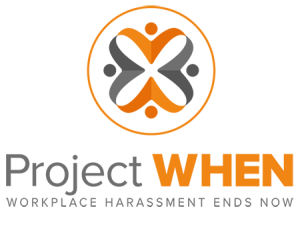Diane Stegmeier was approached by Cincinnati Magazine this summer to discuss a new, unique workspace in the Southwestern Ohio metropolis. The building, which serves as the headquarters to 84.51°, a consumer research firm, is an eye-catching structure featuring large panels of reflective glass Read More
Stegmeier Consulting Group partnered with Knoll in order to spread the word about the importance of developing a business case for new workplace strategies. SCG Founder and CEO Diane Stegmeier authored a whitepaper on the topic, and it has been added to Read More
Stegmeier Consulting Group Founder and CEO, Diane Stegmeier, was invited this past Fall to speak at EMS Live 2015! Diane presented the seminar “Ignoring Shared Workspace Environments: The Fast Track to 2nd Place” on October 27th at 2:45pm. Prior to the event, Diane Read More
On October 1st and 2nd 2015, Ecophon hosted the Ecophon International Acousticians’ Seminar at the Hotel Skansen in Båstad, Sweden. Stegmeier Consulting Group Founder and CEO Diane Stegmeier was a featured speaker and discussed the importance of acoustics in the workplace, with Read More
67 percent of human resources professionals surveyed in the 2015 Workplace Flexibility Study believe their employees have a “balanced work-life.” But when you ask employees, you hear a different story. Recent research shows that employees struggle to find the right work-life balance, with more than two-thirds of today’s U.S. workers struggling to balance their personal and professional lives.
Why the disconnect?
Source: www.talentmgt.com
You may have heard that “work is not a place; it’s a thing you do.”
I’m not sure when this phrase was first coined. But with mobile technology and changes in company personnel, policies have certainly made this a reality now.
However, workplaces are still important spaces. It’s where we connect with our colleagues, socialize and have unplanned conversations and interactions. Without the physical space, we can’t build these sorts of relations. Without physical space, organizations are in danger of becoming so loose that the culture just disappears. Maybe I’m old fashioned, but I Iike to go somewhere to work and see and meet new people. Doing it virtually is just not the same.
Source: insights.colliers.com
Work-life balance has become an oxymoron of sorts, at least within its traditional definition. As individuals strive to achieve more time away from the office, today’s mobile devices manage to tether them to their workplace responsibilities whether or not they are on the clock. As Peter Black of Colliers points out in this article, “the boundaries of our workplace become fuzzier and fuzzier!”
Black argues that before the world gets swept up in any sort of mass work-from-home movement, corporate decision makers need to consider the benefits of the physical workspace. He explains that being present within an office allows employees opportunities to collaborate, and have spontaneous conversations that simply could not occur working remotely. Many companies, when considering their new office environments, have decided to commit to workplace strategies such as the open plan to encourage more of these same chance meetings and face-to-face interactions.
Stegmeier Consulting Group has had the privilege of assisting organizations that have instituted successful remote work programs, as well as organizations that that have placed an emphasis on the in-person power of the physical office. In fact, some clients of ours have engaged us to help with a combination of both! No matter which direction your organization views as its future, know SCG is a partner you can count on to help your people transition smoothly to whichever strategy you deem most appropriate.
Stegmeier Consulting Group can assist with a wide range of challenges involved in implementing a workplace change initiative. Contact us to find out how our services can help your organization.
https://stegmeierconsulting.com/contact/
Changing the way organizations manage workplace change
San Francisco-based video conferencing company Fuze is expanding its platform with the acquisition of an online team collaboration platform, LiveMinutes.
With the addition, Fuze is no longer focused only on online meetings, but is now also rolling out a new product calledFuze Spaces which allows colleagues to chat, share and comment on files, organize projects, and more via a web-based dashboard.
Source: techcrunch.com
Progressive workplace strategies (like remote work and distributed workforces) have provided opportunities for companies like Fuze to develop innovative, virtual solutions to the challenges that naturally manifest while working with off-site colleagues or clients.
Fuze’s new acquisition of LiveMinutes will allow them to add to their meeting service both document and screen sharing capabilities as well. While many organizations are switching to physical collaborative environments, Fuze is ensuring virtual collaboration is also possible.
Stegmeier Consulting Group has seen clients first-hand struggle with implementing remote work strategies. Often times the roadblocks that spring up come in the form of inadequate technological tools to handle the transition, resistance of employees to new ways of work, and middle-managers who are convinced they need to see and be within a close proximity of those they are responsible for.
On the technology side, Fuze certainly sounds like they are well experienced and positioned to provide clients with excellent collaborative software. For help on the people side, contact Stegmeier Consulting Group. Our consultants are familar with the resistance that comes naturally with change, and can provide a variety of services to engage them and help alleviate their concerns.
https://stegmeierconsulting.com/contact/
Changing the way organizations manage workplace change
To improve the bottom line, healthcare systems have made incremental changes to slow the historical escalation in healthcare costs. They have implemented lean/six sigma changes, improved patient safety, and developed better measures and matrix for patient outcomes. A different approach to patient care and communication has also enhanced results. Team-based, interdisciplinary problem solving is becoming much more prevalent in patient care.
Source: www.contractdesign.com
Thanks to input received from organizations across Northeast Ohio, the team at Stegmeier Consulting Group has finalized the schedule for our First Annual Open House. Open house events will take place on Tuesday, September 15th, Wednesday, September 16th, and the morning of Thursday, Read More
You’ve heard the term “change management” and may even know of a company or two that has applied some form of change management services to their project to relocate to a new workplace or redesign their current space. You can’t help but Read More







